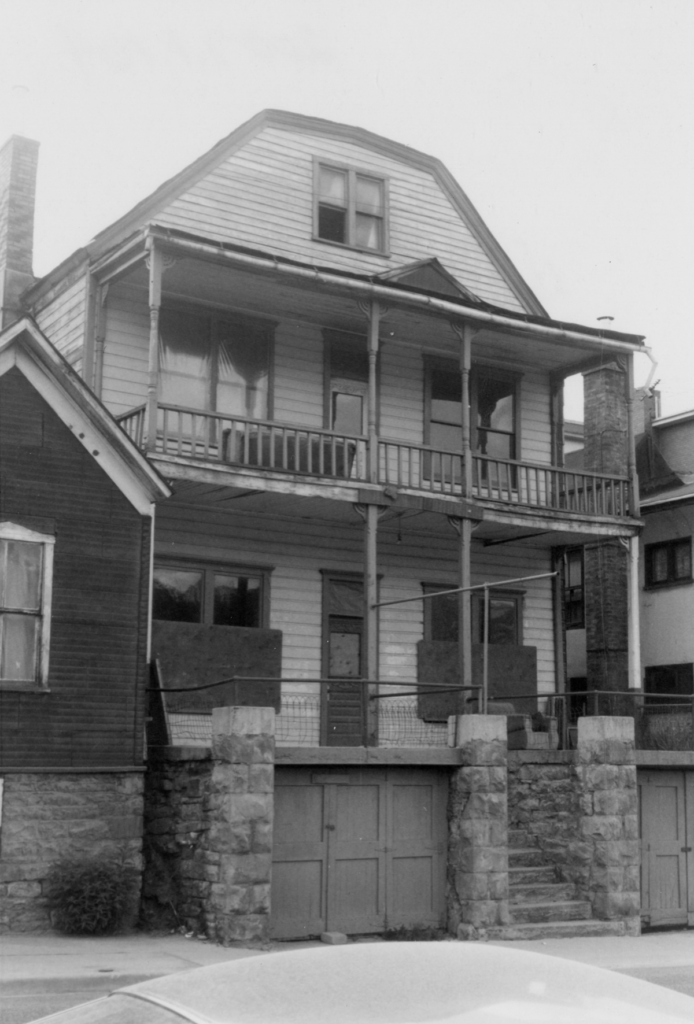The Park City Museum is currently hosting the traveling exhibit, Jacob A. Riis: How the Other Half Lives, which sheds light onto the social reform efforts of photojournalist Jacob Riis. Riis aimed to highlight the plight of New York City’s vast poor, who often lived in appalling conditions in the tenement slums of the city. He spent his life advocating for better public health, sanitation, housing, and education measures. Riis believed that improving the living conditions of these people, many who were immigrants, would improve their lives and allow them to succeed in America.
Housing reformers had attempted to effect change for years, but progress had been minimal; Two tenement laws passed in 1867 and 1879 did little to improve conditions. Then, with Jacob Riis and other reformers had leading the charge with the support of governor (and soon-to-be Vice President) Theodore Roosevelt – a close friend of Riis – the New York State Legislature signed into law the Tenement House Act of 1901.
The act, considered a significant moment in housing reform history, addressed problems in tenement construction that had plagued NYC for years. The “New Law,” as it was called, required substantial changes, such as outward-facing windows in every room, proper ventilation, and private toilet facilities in each apartment.[1]
At the same time, miners in Utah’s mining towns were advocating for a different type of housing reform: the elimination of a compulsory rule requiring unmarried men of a mining company to board and take meals at the company boarding house.
On July 25, 1900, about fifty miners at the Centennial-Eureka Mine in Eureka, Utah walked out in protest of the mine boarding house.[2] The men argued that the lodging provided by the mine company was sub-par, yet costly, and that they would be able to find better accommodations and food in town if given the choice. The miners at the Centennial-Eureka were paid $2.50 a day and charged 80 cents per day to live at the company boarding house.[3]
The strikers doubled their numbers within a day. They held a meeting and formed a committee to present a petition to mine officials. Attorney F. H. Holzheimer spoke to the crowd, expressing his sympathy for their cause, but counseling them to stay peaceful and not commit violence.[4] When the committee met with the mine manager, he would not yield to their demands, and within a few days, the strike was over without accomplishing anything.
The miners’ discontent did not dissipate, however and, a few months later, Holzheimer won a state house seat after running on a platform that emphasized the need for labor reform, specifically the need to overturn the boarding house system. One of his first actions as a legislator, in January of 1901, was to introduce House bill No. 35, to “prevent the compelling of employees to trade with any store or board at any boarding house by means of coercion, intimidation or otherwise.”[5] The House unanimously passed the bill on February 27, 1901 and the Governor approved it shortly thereafter.[6]
This law became known as the Boarding House Bill and had a significant impact on the lives of Parkites. In 1900, about 40% of Park City miners were living in large company boarding houses near the mines – but in 1901, the various mining companies could no longer force unmarried men, or men living apart from their families, to board in the mine boarding houses.[7]
This allowed miners to seek housing in town, and several local entrepreneurs used the opportunity to build new boarding houses at the top of Main Street to accommodate the new demand. The pictured example is the former Bogan Boarding House at 221 Main Street. Two other examples still standing are 125 and 176 Main Streets.
Stop by the Museum to view Jacob A. Riis: How the Other Half Lives, on display until January 7, 2021, to learn about Riis’s reform efforts in NYC and to contemplate the lives of miners living in Park City during the same time period.

Credit: Park City Historical Society & Museum, Dell McCoy Collection
[1] https://www.villagepreservation.org/2016/04/11/tenement-house-act-of-1901/
[2] Salt Lake Herald-Republican, 1900-07-25.
[3] “Eureka,” Deseret Evening News, 1900-07-25.
[4] “Meeting Held this Afternoon,” Deseret Evening News, 1900-07-26.
[5] “House Bills Introduced,” Ogden Daily Standard, 1901-01-25.
[6] “Boarding House to be Wiped Out,” Salt Lake Herald-Republican, 1901-02-28.
[7] National Register of Historic Places nomination form, “Residences of Mining Boom Era Park City,” April, 1984.